


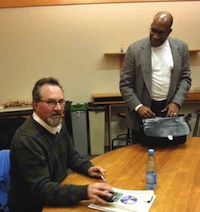
Mr. Charles Setchell of USAID - known as Mr. Disaster Shelter for the US Agency for International Development - was our guest in an informal discussion on disasters, focusing on the situation in Haiti. Faculty and students from throughout the Cambridge academic community attended. Prof. Mark Goulthorpe started the discussion with a presentation of the innovative thermoplastic composite sheets for housing construction. Rebuilding Haiti and Pakistan were discussed, as well as the interplay among government, development agencies, NGOs and the Haitian diaspora.
Information on USAID shelter assistance programs may be found here
Specific information on the debate among Tent vs Plastic Sheet and Pre-fab Construction in Disasters is available here
Incrementalize It! is a game to highlight the implications of incremental housing. It covers how it works and what are some aspects to keep in mind when making decisions. This includes where to put a starter core, how/where to expand, what materials one should use, etc. This game is not only for the homeowner, but the designer as well. The person expanding their house can benefit just as much as the person deciding on policy and designing projects.
The game intends to promote the familiarly and use of core housing, particularly for developing countries where core housing would be an a vital proactive housing option by governments.
Feel free to view the current pdf here.
Do you have experience in game development or these applications? Are you interested? Please let us know at sigus@mit.edu!


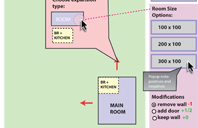
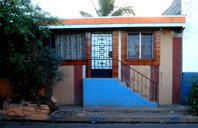
Calling all game developers!! Currently, we are in hopes of developing a game (first on the web, then moving it to a mobile platform), that will be used as a teaching tool for the general public, as well as for people in developing countries wishing to expand their houses with incremental housing strategies.
We want to start out with a basic prototype that we hope to expand. The game will first begin to be developed using softwares such as php, javascript, and/or flash.
Logistics of the game are still being worked out. Feel free to view the current pdf here.
Do you have experience in game development or these applications? Are you interested? Please let us know at sigus@mit.edu!
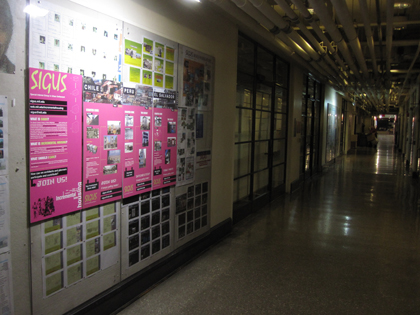
Posters:
*Please note that the main example for Chile is in Iquique, not Santiago.
The Open House for applicants to the Master of Architecture (MArch) Program or the Master of Science in Architecture Studies (SMArchS) Program was held on November 4th. To welcome potential incoming students, New SIGUS posters were added to the main archiecture corridor.
These posters highlight the main principles of incremental housing and what SIGUS has done over the past few years in Peru, El Salvador, and Chile. Are you interested in getting involved in our next endeavor? Please let us know at sigus@mit.edu! Also, feel free to get a closer look at these bright pink boards by clicking on them!>
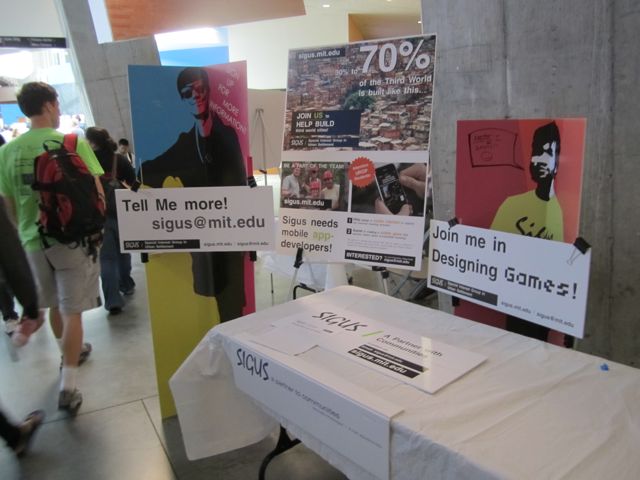
SIGUS participated in the 9th Annual International Development Fair on September 24th. The Fair is traditionally held each year early in the fall semester and provides incoming and continuing MIT students, recent graduates and members of the MIT community an opportunity to learn about ways that they can become engaged in international development. This year the fair was held on the Stata "street".
Mr. Sigus and newly inaugurated, Sigus Jr. made a guest appearance to call out for people to assist in aiding the development of third world countries. How you ask? By designing interactive iphone apps and games that illustrate the principles of how incremental housing works!
Be part of a mobile app design that will be used to capture informal housing data around the world! Help us inform others about the incremental growth process! Are you interested? We are looking for UROP students who are mobile-app developers. Contact us at sigus@mit.edu!
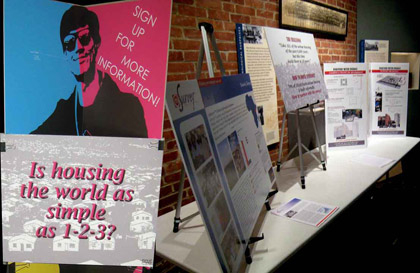
SIGUS exhibited its current research in incremental housing at the 5th Annual International Development Night at MIT on April 9. A lifesized Mr. SIGUS held the teaser: "Is housing the world as simple as 1-2-3?", which related to the three steps in incremental housing strategy: Establish a FRAME for development; Provide a STARTER CORE; and SUPPORT the process with appropriate policies.
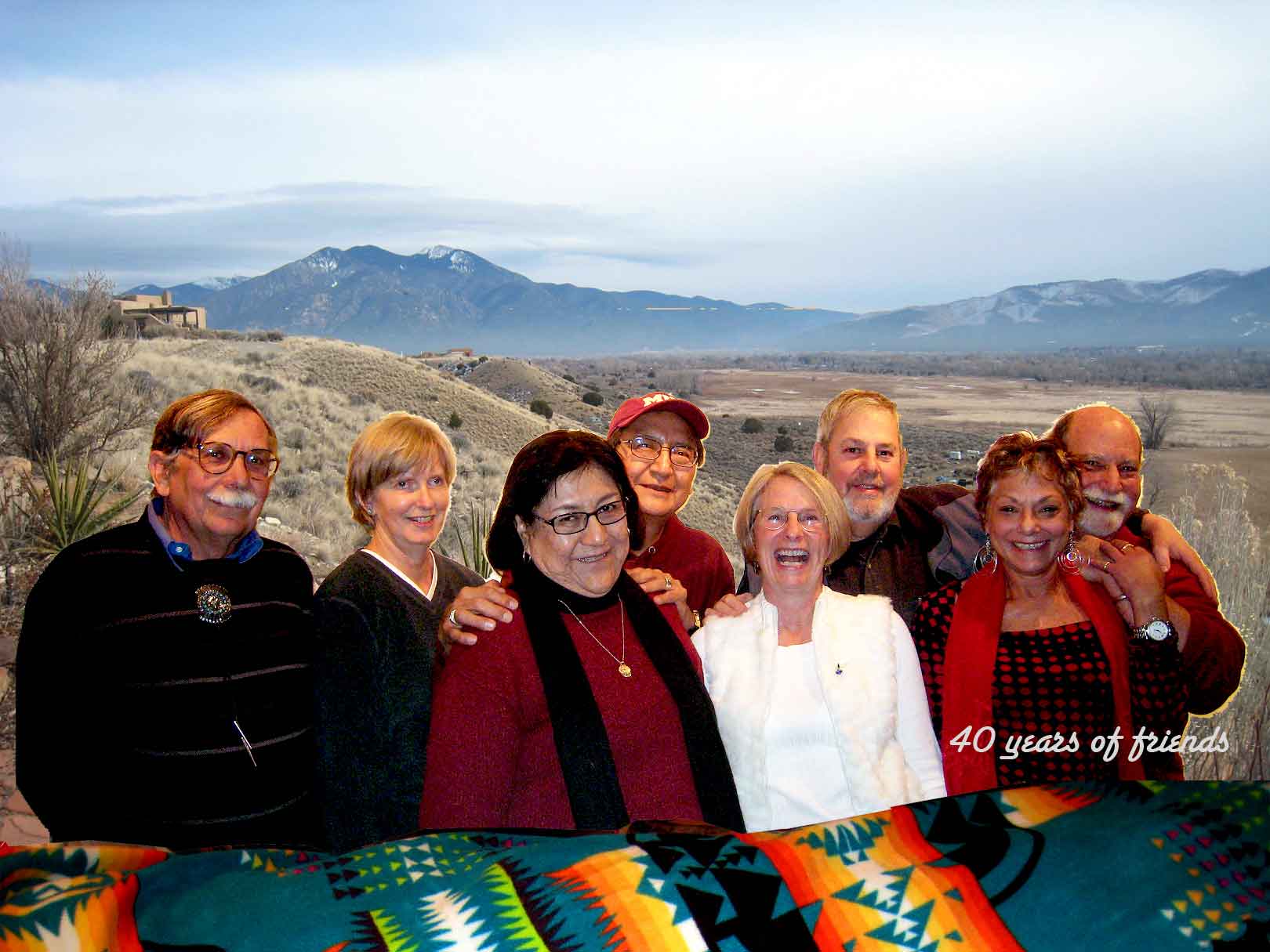
A reunion was held in the fall of 2009 at the home of Bob Parker in Taos, New Mexico, with some of the early graduates from the Urban Settlement Design Program at MIT, now known as SIGUS - Special Interest Group in Urban Settlement (the name was changed in 1984 to better reflect both architectural and planning interests of the Program). Attending the two day event were: Earl Kessler (1971) and his spouse, Shari Kessler (also an MIT graduate (1971); Andy Acoya (1970) and his spouse Marie Acoya, and Bob Parker (1970) and his spouse, Deborah McLean; and Reinhard (1970) and his wife Happy. Reinhard remained at MIT following graduation and has headed up the SIGUS Program for many years.
These graduates have remained life long friends and during the reunion discussing the benefits of our education that we received from MIT, how that experience changed our lives and influenced our careers, and perhaps, most important, the values and ethics that we all derived from our time together at MIT. Among those values and ethics was a common thread of service to others and honesty in professional work.
The Program at MIT had been initiated by the renowned architect, planner and teacher, Horacio Caminos, now deceased. John Steffian was an Assistant Professor in the Program at that time and worked with the students in a research and tutorial capacity, along with John Turner as occasional lecturer. It was through Professor Caminos' inspiration and guidance that many of the graduates from the Urban Settlement Design Program began their careers working in the developing country context with housing settlement design and planning policy throughout the World. Other early graduates in the Program included Praful Patel who became VP of the World Bank Southeast Asia and George Gattoni, one of the authors of 'No More Slums' initiative that lead to the founding of the World Bank/UN Habitat Cities Alliance, and Roberto Chavez, a recognized expert in upgrading low income settlements.
The many alumni have formed lasting collegial and social friendships from their time at MIT. This was a magical time at MIT and for most of us remains as one of the seminal times of our lives. One of the things that made the Program so special were the many top thinkers who participated in the program, including John Turner, Hans Harms, Lloyd Rodwin, Donald Schon, William Mitchell, Lisa Peattie, Kevin Lynch, Chester Sprague and others. We all owe a great debt of gratitude to them, to Horacio Caminos and to the larger MIT community.
- From comments by Robert Parker, '70
Three projects were planned for the IAP period in January 2009. See the project sheet for more details.
Perquin, El Salvador
MIT students again collaborated with the Perquin community in a design/build project during January 2009. In the first collaboration during IAP 2008, MIT students planned, designed and built an improved outdoor washing area and a shaded area for sitting and gathering outside of the main prenatal clinic in Perquin. The interest for January 2009 was centered on a two-week, design-build project around Perkin with some related planning components happening in parallel.
Terrebonne Parish, Louisiana
Hurricanes Gustav and Ike again confronted us with the increasing risk from global warming, and the need to seriously re-evaluate coastal living. Sustainability has become an added concern, and the serious disruption of services - particularly electricity and drinking water - after a storm urge the need for a more comprehensive approach toward housing. The goal of this project was to design a sustainable cooperative village, exploiting the opportunity of elevated housing mandated by regulation and prudence. The project was continued during the Spring Term. Several field trips to the bayous were undertaken as background to the studies.
Lamhin Community, Bangkok, Thailand
Lamhin is an agricultural community in the northeast outside Bangkok that is separated from major roads by the Lamhin Canal. The mission of this project is to build a bridge. The bridge would allow cars and tractors to get inside the community to help people plant, harvest and transport the community’s main source of income. It wouldl create an alternative way for the people to increase their income by providing means to commute to downtown Bangkok.
For more information, please see the project sheet.
SIGUS participated in MIT's 6th Annual International Development Fair, October 5, 2008. The Development Fair (IDF) is an event designed to showcase the many groups, projects and activities at MIT that provide students with an opportunity to work on issues related to international development. The Fair brings students and organizations together, to promote awareness and encourage the exchange of ideas. SIGUS highlighted 3 events being planned: A Design/Build activity in El Salvador; 'Go Lamhin', a bridge building project in rural Thailand; and an 'Action-Research Workshop' developing a 'Smart Village' for the bayous of Louisiana.
Esther Chung from the 'Go Lamhin' project fielded questions from interested students.
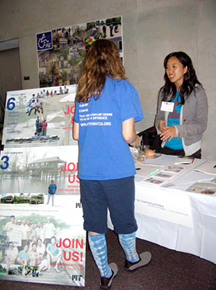
Reinhard Goethert was invited to join a group of international experts in developing housing and land strategies for UN Human Settlements Programme in Nairobi, October 7-9. The goal of the sessions was to advise on guiding strategies for the next 6 years within the framework of ‘sustainable urbanization’. While in Nairobi, discussions were held on the Habitat-University Partnership Programme, and explored the potential participation of MIT.
Prof. Banashree Banerjee, New Delhi; Florian Steinberg, Asian Development Bank; Reinhard Goethert, SIGUS; Forbes Davidson, Institute for Housing and Urban Development Studies, Rotterdam.
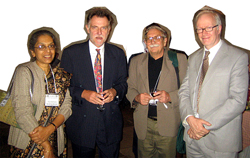
The doubling of the Third World urban population - with a tripling of the urban footprint by 2030 - has forecast a vision of a frightening urban future. In the next 23 years, the land required for urban growth will equal that used in the past 6,000 years of human history. Moreover, this growth is projected to be predominantly low-rise, and inhabited by a largely poor population. The specter of informal massive squatter fringe settlements of the past has the potential to devastate our cities of the future. Speed and scale are the new challenges.
Lacking are viable proactive approaches for housing the low income population, and predictions for the future are grim if no innovative approaches are developed and implemented. Environmental concerns exacerbate the problem. We must develop powerful creative strategies if we are to avoid an unthinkable future.
This course is a challenge-based, hands-on brainstorming of Third World urban issues, drawing on experts to excite and challenge us through progressive levels of exploration. A culminating workshop abroad brought us back to reality.
The course included a 2-week field survey comparing planning strategies in Singapore - a highly controlled model - with the laissez-faire approach in Bangkok.
Creative? Energetic? Confident?
Join us if you are committed to meeting the challenge!
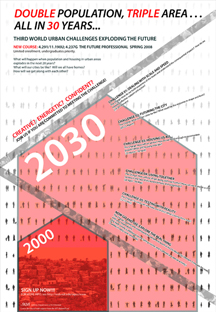
Reinhard Goethert presented the experiences from the previous SIGUS workshops related to urban migration to the Visual Arts Program. The migrants in the Third World and their impact on urban development was explored using examples from Manila, Philippines; Lima, Peru; and other rapidly growing cities. Focus was on the shelter options and choices which are made by migrants at each stage in their urban assimilation.
The presentation was part of the series “4.381/4.366 Advanced Visual Design - Give Me Shelter: Conditions of Living in Unstable Times”.
George Fiebig presented his prize-winning Chumbe Island Coral Park resort in Zanzibar. Mr. Fiebig is a young German architect practicing in Australia, with projects in Indonesia, Tanzania, Mozambique and Australia.
His prize-winning project links eco-interests with tourism, and with a very compelling architecture using natural materials.
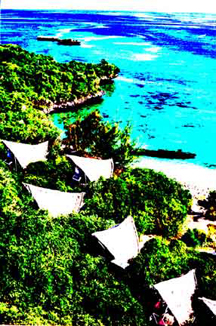
The workshop was a collaboration of students from throughout the MIT community and from universities abroad. Twenty students from MIT and abroad participated in 1-week of hands-on repair and rebuilding of hurricane damaged housing on the bayous of Louisiana, followed by 1-week of design and construction of housing elements for the on-going Lift House project.
Partner universities from previous international workshops each selected 2-3 students to participate. Workshop headquarters and accommodation were in the ‘Good Earth Volunteer Village’ in Houma, Louisiana.
The program was divided into 2 phases:
Additional activities included:
Faculty was drawn from the ongoing ‘Sustainable Housing on the Bayou Initiative’ of TRAC - a coastal Louisiana disaster recovery and preparedness organization, Oxfam America - an international aid organization, and the SIGUS Group in the School of Architecture and Planning at MIT.
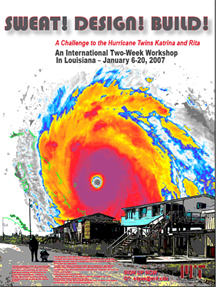
Presentation by Charles A. Setchell; Shelter, Settlements, and Mitigation Advisor, USAID Office of U.S. Foreign Disaster Assistance (OFDA). An up-to-date review of the efforts being made in rebuilding after the earthquake by the various national and international agencies.
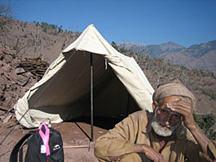
20 MIT volunteers rebuilt houses damaged by the 'evil hurricane sisters' Katrina and Rita. They worked with the local NGO TRAC (a disaster mitigation group) in Houma about 50 miles southwest of New Orleans, the last large town before the bayous of the coast. Housing was in 'iPods' (as we call them) and meals were communal. Just like summer camp!
The New Practitioner course of SIGUS explored innovative 'lift house' designs for rebuilding coastal regions of Louisiana. The international NGO Oxfam America and the local Louisiana group TRAC have welcomed us to jointly develop concepts for housing that meet the hurrican challenges. The student team developed affordable and appropriate housing concepts that exploited stilt housing approaches built by volunteer help and 'sweat equity' of the future owners. The design focused on both 'product' and rationalization of a 'process' of construction appropriate to the largely volunteer labor.
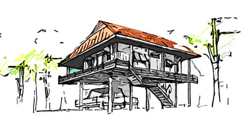
Professor Jin Guang-jun, Dean of the Harbin Institute of Technology at the new Shenzhen Graduate School, was hosted by SIGUS to meet other faculty and to tour the campus. Prof. Jin explored possibilities of collaborative activities between the schools including joint workshops, short-term visiting professors, and joint international conferences.
SIGUS sponsored the documentary film-maker Therese Condit in the showing of her film: “Banda Aceh, Indonesia: In The Wake of Tsunami, A Witness.” The film looks at the rebuilding situation, almost a year after the tsunami and its devastation, as most citizens of Banka Aceh have yet to see the promised relief funds materialize.
SIGUS led sessions to help individuals and groups brainstorm housing innovations for the MIT $1K Enterprise Competition. Focus was on the Katrina/Rita areas, and in other devastated countries. It has been noted that many technically elegant, environmentally sound, affordable innovations in housing have been proposed over the last 30 years, but few - if any - are mainstreamed and have real impact. Something is missing. The MIT $1K competition offered the opportunity to explore a market-oriented approach, linking a clear immediate need with bold innovations.
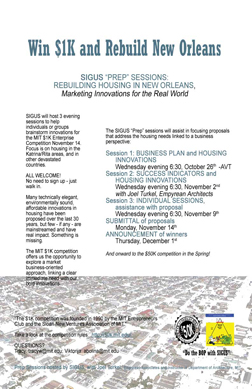
SIGUS has undertaken several events addressing the challenge of the hurricane disasters:
A session at the Architectural Studies Colloquium explored the possible contributions to the unserved 'bottom of the pyramid' - the 'BOP'. With cities expecting to double in size in the next 20-25 years the issues are abvious and frightening. Special guest was Alyce Russo (MCP '89) of the firm Schall and Russo Planning Works, and together with SIGUS staff challenged the group to assess contributions and brainstorm possible ways to get involved.
A poster display and computer images were presented at the MIT's annual International Development Forum. TA Tracy Wharton discussed the program with visitors to the well-attended event.
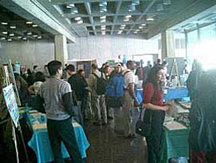
Melody Tulier, a DUSP MCP graduate student, represented SIGUS in presenting a paper at the inernational conference "Urban Children and Youth in the Middle East and North Africa" in Dubai, UAE. The paper entitled, "Children, Participation, Global Challenges and Educational Priorities," highlighted the SIGUS workshop in San Cayetano which featured rapid interactive planning with families and children.
Dr. Reinhard Goethert was a keynote speaker at the ARCHCAIRO 2005 Conference "Globalization and Beyond: Architecture, Communities and Settings." The conference was hosted by the Department of Architecture at Cairo University. His paper "Globalization, Practice and Education: Old Challenges, New Demands" called for a new model of education built around a 'learning-action' model.
SIGUS is providing long-distance support to the studio "Design Response in the Aftermath of Disaster" offered at the University of South Wales in Sydney, Australia. The studio focuses on tsunami relief and rebuilding efforts in Sumatra, and is supported by a broader network of schools internationally.
How will you spend your Spring Break? Consider a 1 week 'Challenge' to brainstorm how to rehouse the families displaced by the Tsunami. How would you tackle the immediate large-scale demands, the limited materials, the disrupted community and the overstressed government's capabilities? Can there be more than a tent??? Form a team and contribute!
Two afternoons will feature presentations from architects recently returned from Indonesia. Mentoring sessions throughout the week will help develop ideas. Advisors are professionals from Sri Landa and Indonesia, as well as from the local expert community. A presentation at the end of the week will identify promising ideas. Representatives of the winning team will be sent to Washington, D.C. to present their ideas to the Disaster Mitigation Office of the US Agency for International Development. Open to teams and guests throughout the MIT community. An event hosted by SIGUS.
In 1969, four squatter communities were surveyed by MIT in Lima, Peru: Cuevas, El Ermitano, El Agustino, and Mendocita, and documented in the book, "Urban Dwelling Environments" (Caminos, Turner, Steffian; MIT Press, 1969). It is now 35+ years after: What happened? How did they manage? Do they still offer housing opportunities for the low income?
SIGUS revisited the settlements in January 2005, for a 2 week workshop to explore these questions. The workshop collaborated with students from the Facultad de Arquitectura Urbanismo y Artes (FAUA) in the Universidad Nacional de Ingenieria (UNI), and with NGOs working actively in the settlements. Four teams of students interviewed families and documented their house expansion. They were joined by two special groups: one explored the use of internet cafes in the squatter settlements, and another developed concepts for a self rish-assessment checklist for families to make informed decisions on earthquake risk. As a result, a collaboration was established with FAUA-UNI to promote joint research of students from MIT and UNI, and proposals are already being considered for the Summer of 2005.
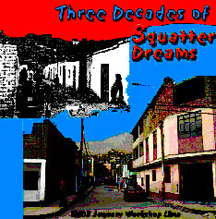
Toni "El Suizo" Ruttimann was hosted by several groups from MIT, including SIGUS. After an earthquake struck Ecuador in 1987, Toni left Switzerland immediately after graduating from high school, determined to help in any way he could. With no technical background, he invented a method of building suspension bridges by hand through community involvement, with little money, using steel cables and pipeline donated by oil companies. 17 years later, 234 bridges have been built across Latin America, Cambodia, and Vietnam, helping over 600,000 people.
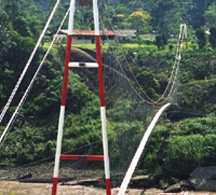
Students from the Albert Einstein University in El Salvador - Pamela, Carmen, Lily and Claudia - met with MIT students for two days to discuss the San Cayetano Workshop carried out jointly with SIGUS in the summer. The students have taken the workshop methodology and are developing it for their thesis focused on housing design. They continue to monitor and support the San Cayetano project, and plan to use the participatory approach in other settlements. The San Cayetano Workshop was funded by the MIT Service Learning Program, with additional contributions from local NGOs.
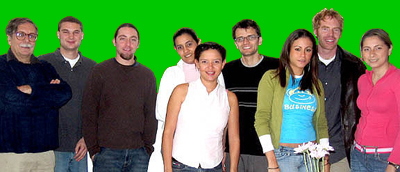
SIGUS joined with the Aga Khan Program in hosting Biresh Shah, a colleague from Kathmandu, Nepal. Mr. Shah presented slides of the tensions of modernity and tradition in architecture in the design of buildings. Mr. Shah was a SIGUS colleague in 1988 when he received a SMArchs degree. He is a practicing architect and teaches at the Tribhhuwan University in Kathmandu. He is founder and director of ARCHIPLAN, an architecture and planning firm.
SIGUS participated in the Third Annual International Development Forum at MIT. The Forum is a way of sharing information and celebrating the rich variety of activities at MIT throughout the year that contribute to international development. About 40+ MIT academic programs and student groups partipated in the Forum. The goal of the Forum is to highlight the ways that MIT makes a positive difference in the world and helps students gain skills and experiences that will equip them for the future.
SIGUS partnered with 45 earthquake-displaced families in designing their resettlement community in a 1-week workshop. Both adults and children actively particpated in the workshop. Essentially, two workshops ran parallel with joint meetings at various points to exchange ideas. Three students from the Department of Architecture and Department of Urban Studies and Plannin participated (Gabriel Arboleda, Melody Tulier, Susana Williams), as well as staff from two local NGOs and students from local universities in El Salvador. Information was also collected on prototype houses which were offered to the displaced families. This information provided material for further study during the fall term at MIT in the course, "The New Practitioner." Preliminary field surveys from two 'site and services' low-cost developments from the 70s were also undertaken as further reference for the course at MIT. The workshop was made possible through funding from the MIT Service Learning Center and Trocaire, an Irish-Catholic NGO.
SIGUS joined an international group of universities, research centers and NGOs as a founding partner in the "Global Open Learning Forum on Risk Education (or GOLFRE)." Representatives from India, Japan, Nepal, South Africa and the United Kingdom joined the network to tap the tacit knowledge, practical wisdom and human capital latent in the minds and practices of field workers as the principal resource for training and education. Susana Williams, a dual-degree student from MIT, participated in the SIGUS team.
The preliminary work continues on exploring the use of 'shape grammars' as a teaching tool for schools. Children are seen as key 'change-agents' in discovering new designs using traditional elements. The key questions remains: how to confront the McDonaldization of the world.
Several of the January Workshop reports are now available in CD format. Please inquire for specific workshop.
A second version of the CD on "Upgrading Urban Communities: A Resource for Practitioners" has been completed. It is being distributed by the World Bank Thematic Group for Services to the Urban Poor, and is sponsored by the Cities Alliance and DFID.
This is a prototype web site currently being developed by SIGUS for the World Bank. The work is planned together with the IIED (International Institute for Environment and Development), London.
web.mit.edu/urbanupgrading/urbanenvironment
Under preparation for the Water Utility Partnership, a joint program of the Union of African Water Suppliers (UAWS), Regional Center for Low Cost Water and Sanitation (CREPA), and Training, Research and Networking for Development (TREND). Sponsored by the European Commission and the Water and Sanitation Program. The aim of the Toolkit is to provide sector practitioners, policy and decision-makers, access to information on current trends and knowledge gained from past experience regarding water supply and sanitation service delivery to low income areas. The Toolkit should enable readers to identify problems or challenges, and draw up a strategy for addressing these challenges using information and other resources assembled for this purpose.